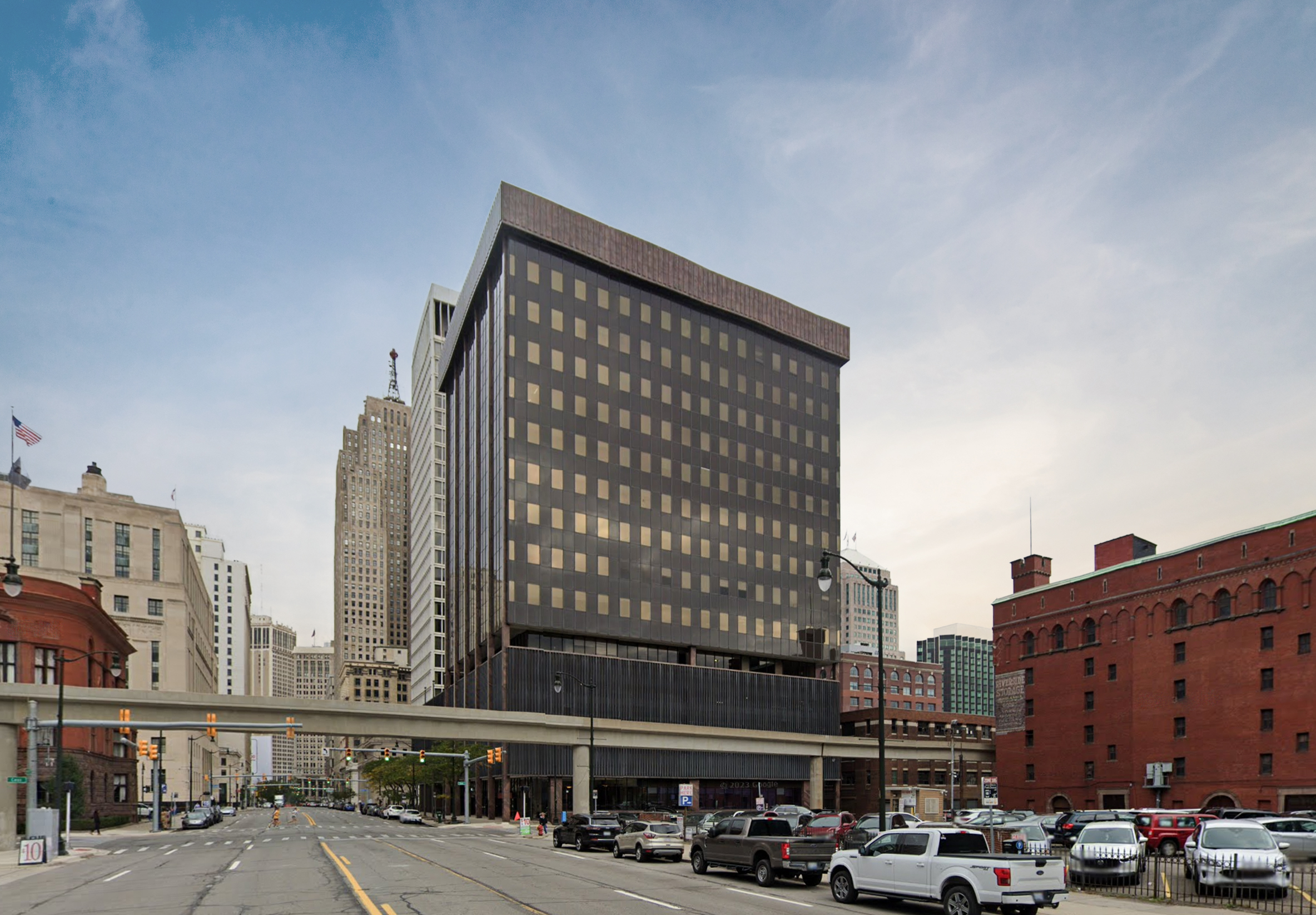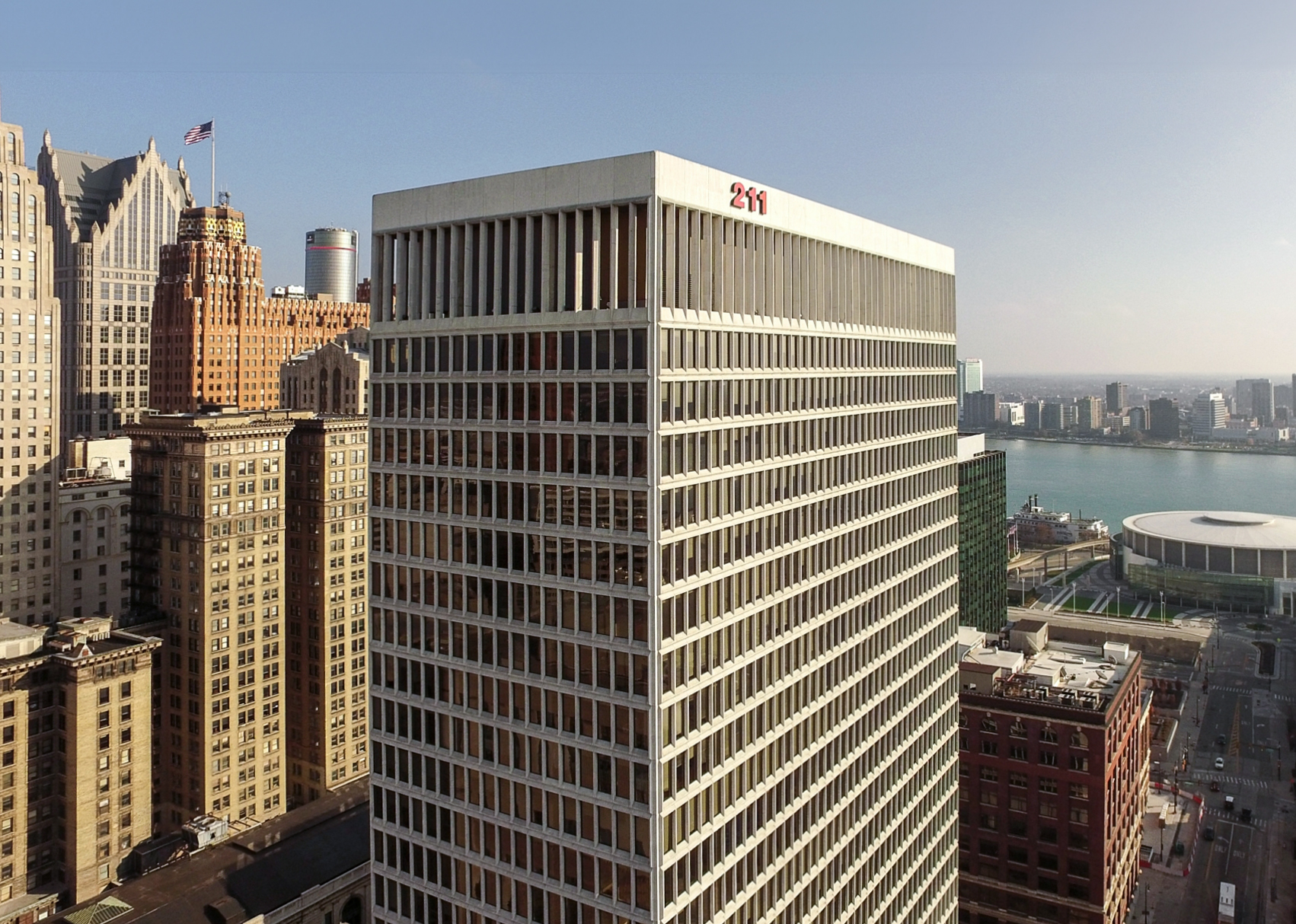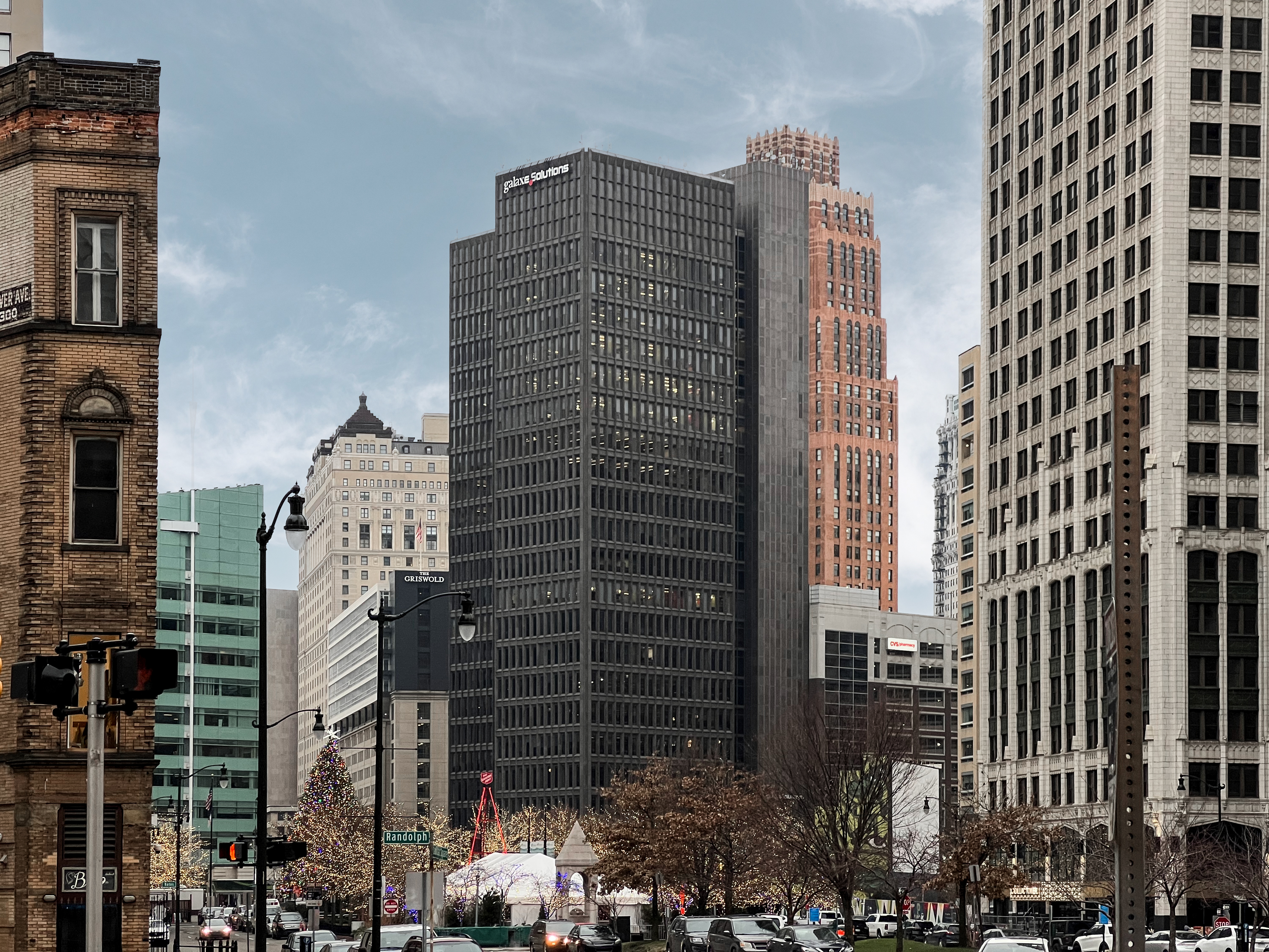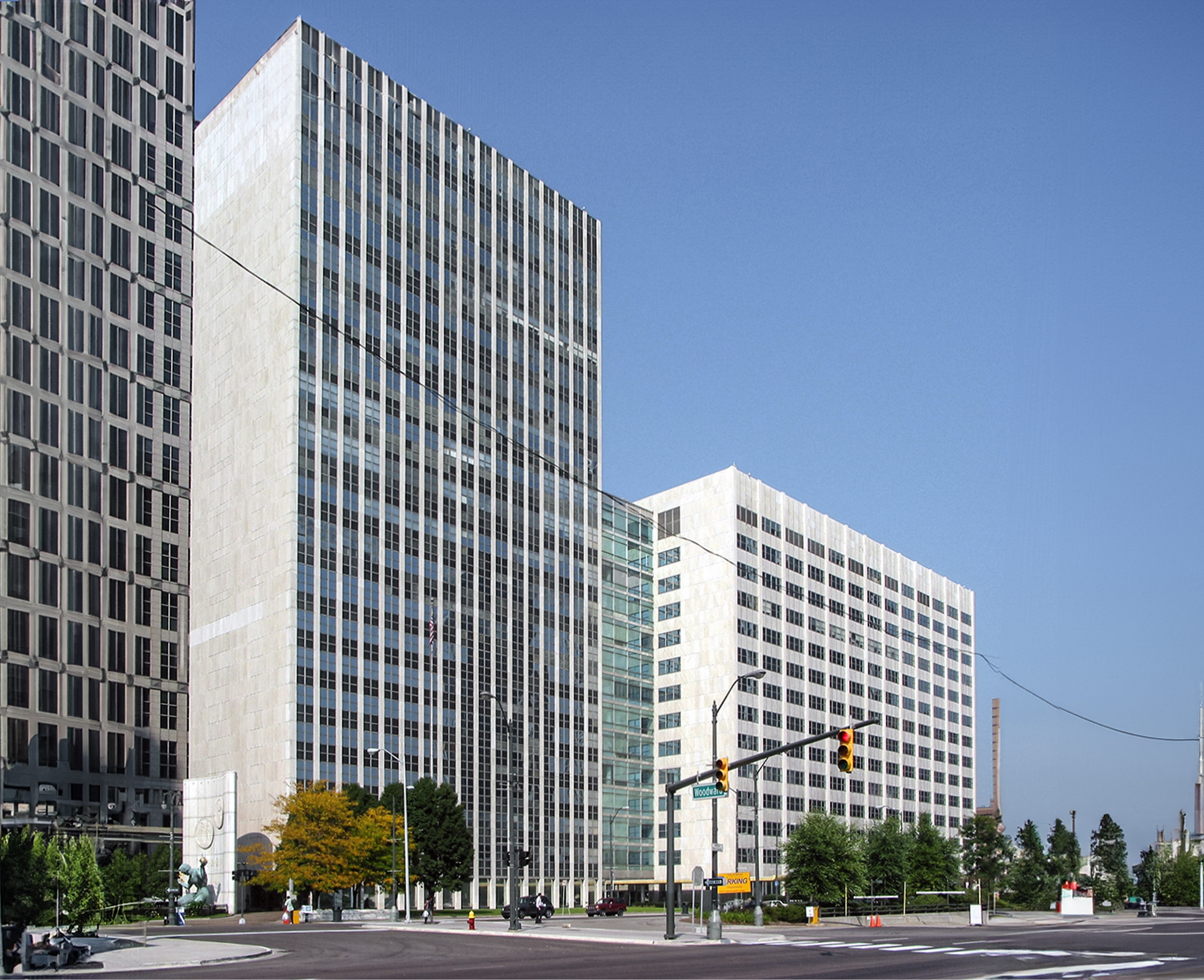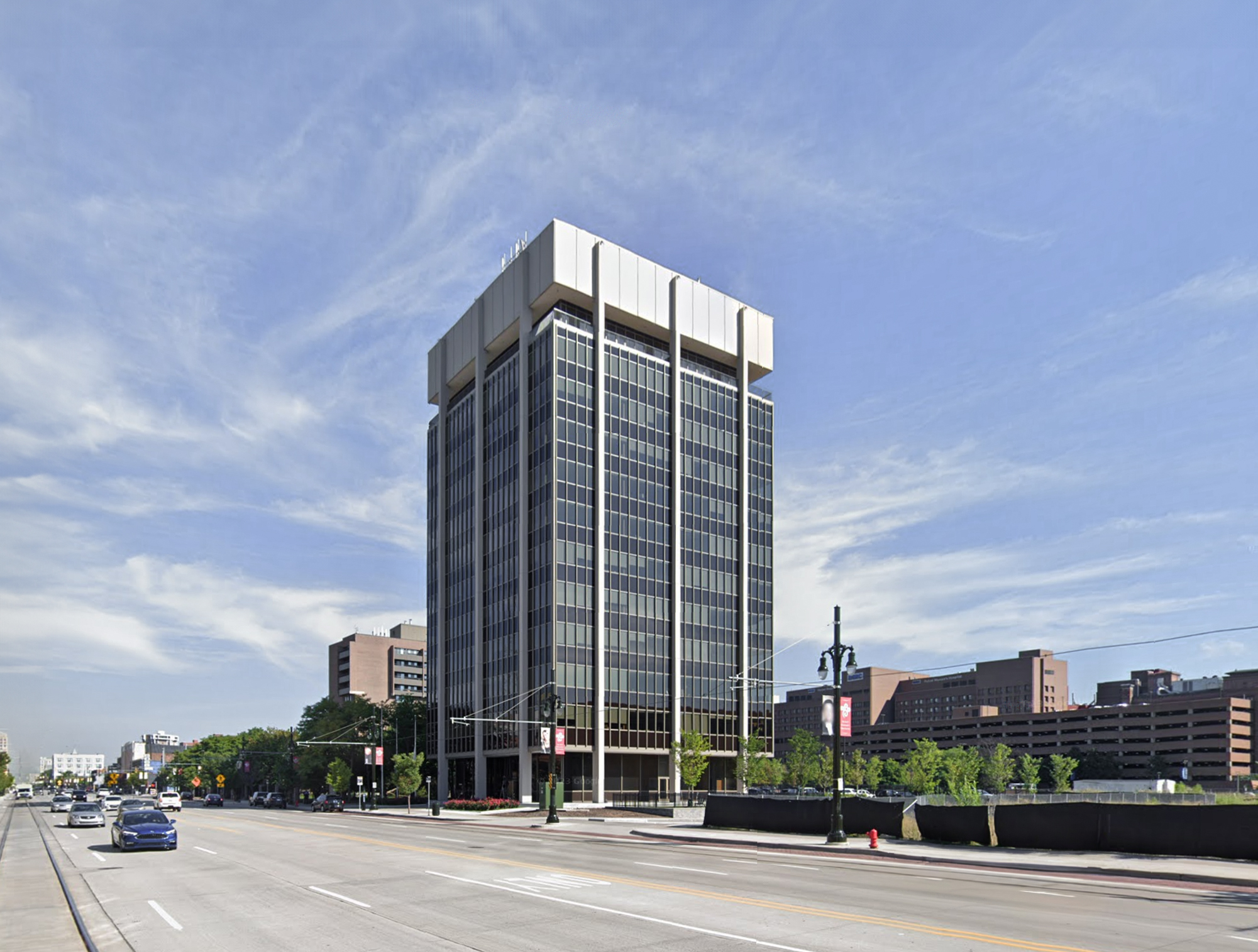The Fort Washington Plaza is an International Style skyscraper designed by Louis G. Redstone & Associates, and built in 1969 in Detroit, MI.
Its precise street address is 333 West Fort Street, Detroit, MI. You can also find it on the map here.
The building consist of a lower podium that takes up the entire block and houses some retails space on the ground floor and the parking on the rest of the floors, and the tower, which footprint is only half the size.
The building underwent a major restoration in 2006.
